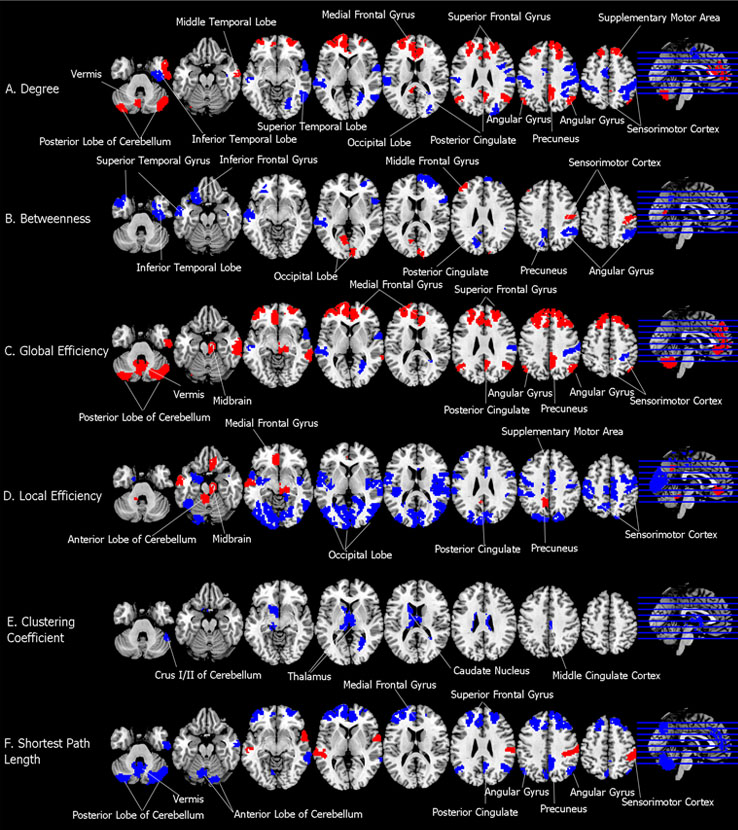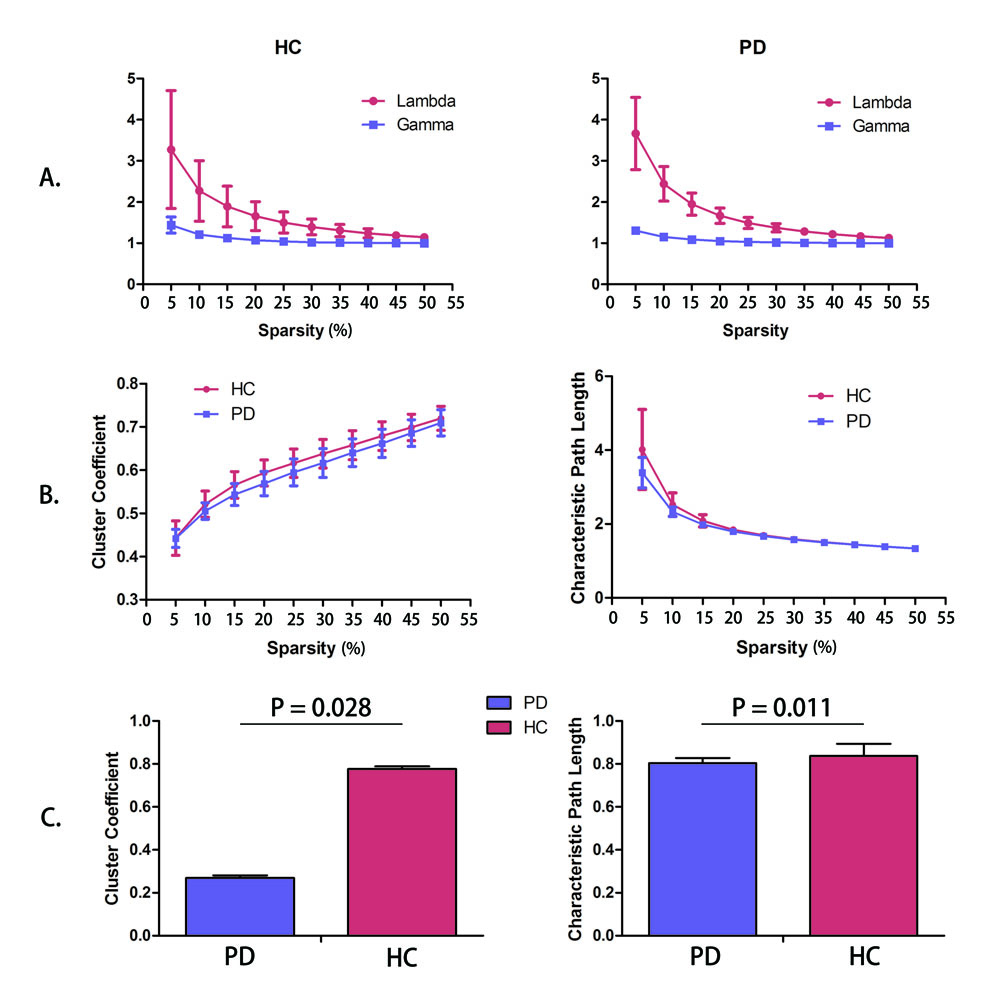Session Information
Date: Thursday, June 8, 2017
Session Title: Parkinson's Disease: Neuroimaging And Neurophysiology
Session Time: 1:15pm-2:45pm
Location: Exhibit Hall C
Objective: We aim to investigate topographic structure in drug naive patients with Parkinson’s disease (PD).
Background: Resting state functional magnetic resonance imaging (rs-fMRI) provides valuable insights into alteration of brain network in PD. Graph theoretical analysis, originated from mathematical study of networks, has been applied to compute a complex brain network to transfer complex brain network into nodes, edges and lines. The combination of rs-fMRI and graph theoretical analysis allows revealing small-world, modularity and hub properties in the complex human brain network.
Methods: Twenty six drug naïve PD and 19 age- and gender- matched healthy controls (HC) were included in our analysis. Small-world property and topographic profiles (nodal degree, global efficiency, local efficiency, cluster coefficient, shortest path length, betweenness centrality) were measured and compared between groups, with age and gender as covariates. We also performed correlation analysis between topographic features with motor severity measured by UPDRS III.
Results: Small-world property was present in PD (Figure 1). Nodal degree, global efficiency, local efficiency and characteristic path length consistently revealed disruptive sensorimotor network, and visual network to a less degree in PD (Figure 2). By contrast, default mode network (DMN) and cerebellum in PD showed higher nodal degree, global efficiency and local efficiency, and lower characteristic path length. Global and local efficiency in the midbrain was higher in PD excluding substantia nigra (Figure 2C and 2D). PD group also exhibited lower cluster coefficient in the subcortical motor network (thalamus and caudate nucleus) than HC (Figure 2E). No significant correlation was found between topographic properties and motor severity.
Conclusions: Disruptive sensorimotor network and visual network may be a potential biomarker of PD. Unlike Alzheimer’s disease targeting DMN, PD pathophysiology may specifically target sensorimotor and visual networks. DMN, cerebellum and a certain areas in the midbrain may play compensatory effect for disruptive networks.
References: 1. Watts, D.J. and S.H. Strogatz, Collective dynamics of ‘small-world’ networks. Nature, 1998. 393(6684): p. 440-2. 2. 2. Latora, V. and M. Marchiori, Efficient behavior of small-world networks. Phys Rev Lett, 2001. 87(19): p. 198701.
To cite this abstract in AMA style:
H. Chen. Impaired sensorimotor and visual networks in drug naive Parkinson’s disease based on graph theoretical analysis [abstract]. Mov Disord. 2017; 32 (suppl 2). https://www.mdsabstracts.org/abstract/impaired-sensorimotor-and-visual-networks-in-drug-naive-parkinsons-disease-based-on-graph-theoretical-analysis/. Accessed December 23, 2025.« Back to 2017 International Congress
MDS Abstracts - https://www.mdsabstracts.org/abstract/impaired-sensorimotor-and-visual-networks-in-drug-naive-parkinsons-disease-based-on-graph-theoretical-analysis/


